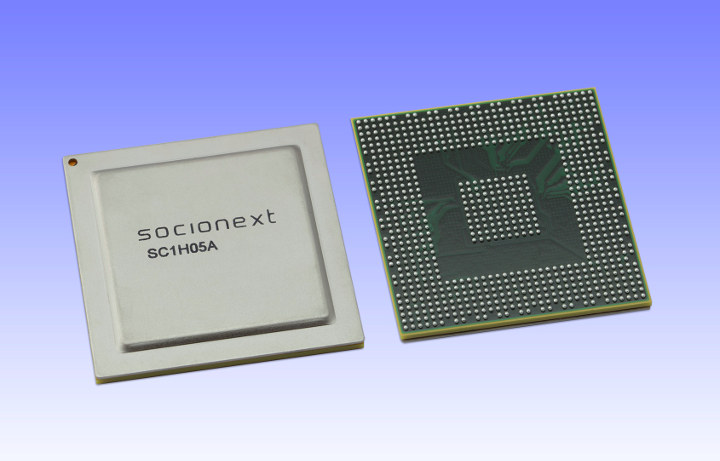HDMI 2.1 specification was released late last year with the main benefit being the support of 8K videos at up to 120 Hz, and a small downside with the requirement for new 48G cables. Samsung Q900R is one of the first 8K TV on the market, but according to the product page HDMI 2.1 is not supported just yet:
Will provide complimentary upgrade for HDMI 2.1 support when available. Please contact customer support for more details
So it looks like the Quantum Processor 8K processor found in the TV will be firmware upgradable to support HDMI 2.1. Anyway for 8K video equipment to be useful we’ll need video equipment to support HDMI 2.1 Tx & Rx, and SocioNext has launched what it claims are the first HDMI 2.1 compliant video processor ICs with their HV5 series.
 The processor family comes with HDMI Tx and Rx with two main series:
The processor family comes with HDMI Tx and Rx with two main series:
- Interface Bridge Chip SC1H05AC Series
This family includes two processor that enable transmission of 8K video with built-in HDMI 2.1 Tx:
- SC1H05AC01 with 4x HDMI 2.0 inputs
- SC1H05AC02 with 4x V-by-One inputs.
The bridge chips allow 8K output over HDMI 2.1 using multiple inputs from legacy interfaces like HDMI 2.0 and V-by-One. In other words they take four 4K video inputs and output the result to 8K over a single HDMI 2.1 (48G) cable.
- 8K TV Video Processing Chip SC1H05AT1
SC1H05AT1 is optimized for the use in 8K TVs with support for the Advanced BS 8K Broadcasting scheduled to start in Japan later this year. It is equipped with HDMI 2.1 Rx ports to play 8K video content from external sources.
The processors’s up-scaler functionality and Socionext’s proprietary high picture quality technology enable the playback of Full HD (2K) or 4K video content on 8K panels with optimal quality.
SC1H05AT1 key features:
- Input Interface – 5x V-By-One HS 4 Lane; 1x HDMI 2.1 / HDCP 2.3
- Output Interface – 8x V-By-One HS 8 Lane
- Image Processing – 8K Up-Scaler, Super-resolution (8K PLUS), HDR, MEMC frame rate exchange, Local Dimming Control
- Memory I/F – 3x ch 32-bit DDR4-2400/2667MHz
Socionext is currently showcasing HV5 series at CEATEC Japan 2018, and shipping for HV5 video processing chips is slated for March 2019.

Jean-Luc started CNX Software in 2010 as a part-time endeavor, before quitting his job as a software engineering manager, and starting to write daily news, and reviews full time later in 2011.
Support CNX Software! Donate via cryptocurrencies, become a Patron on Patreon, or purchase goods on Amazon or Aliexpress





